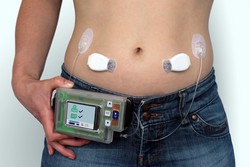Steps towards an artificial pancreas
Many people with diabetes constantly need to check their blood glucose level and regularly inject with insulin to avoid health problems. This is an expensive and time-consuming process, and can have a significant impact on their quality of life. The EU-funded PCDIAB(opens in new window) (A portable bihormonal closed loop for diabetes) project has created a small bihormonal artificial pancreas device for diabetes patients to manage their glucose levels at home. The PCDIAB prototype is much smaller than previous versions and incorporates advanced software and algorithms. With built-in pumps for insulin and glucagon delivery and wireless connection to glucose sensors, the device can control glucose levels in real time. The team has completed several clinical trials. A prototype developed in the project showed positive results in an initial study, as published in a major diabetes journal. A study with diabetes patients used an adapted single-port device to sense glucose and deliver insulin as well as glucagon at one site. Results were positive but raised the issue of side-effects such as nausea that are associated with glucagon. Researchers are still working on a glucagon solution that will be stable over long periods of time and trials are scheduled to begin in early 2017. This is the final barrier to using the bihormonal artificial pancreas for diabetes management. Project PCDIAB organised a conference to disseminate the results of the project in the context of the future for diabetes treatment and research. More than 1 500 people with diabetes have expressed interest in testing the device, and surveys show that the artificial pancreas concept is popular amongst patients. When publicly available, the PCDIAB device will simplify diabetes management, encourage patients to participate in their own health care and reduce the negative health impact of diabetes worldwide. A reduction of clinical complications and hospital admissions is another welcome expected benefit.







